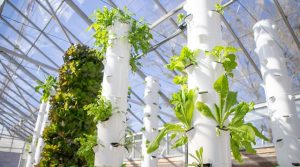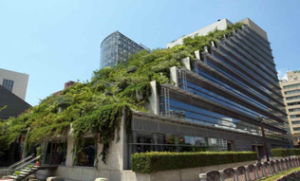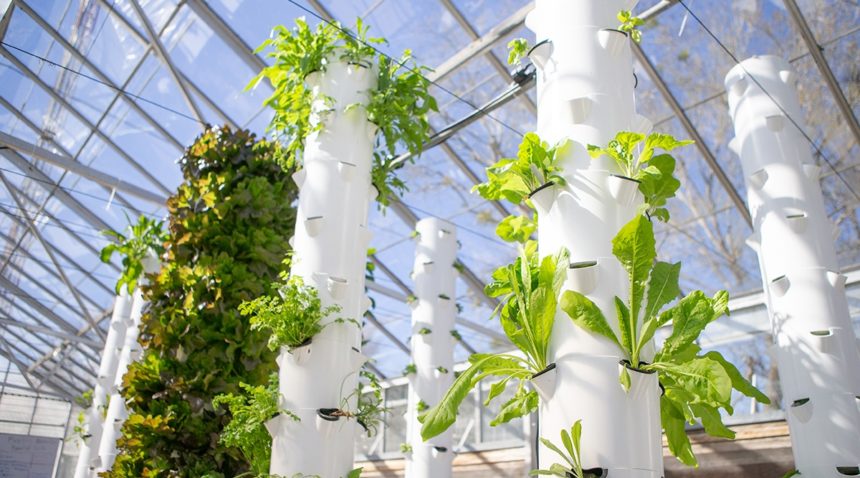By Mim Shea, Bexar County Master Gardener Intern
August 2023

(Photo by Sam Craft)
Vertical gardening is revolutionizing the way we approach urban agriculture and horticulture. This growing method offers a multitude of benefits which are transforming the landscape of home and industrial gardening. As space becomes increasingly limited in densely populated areas, the concept of growing plants upwards rather than outwards has gained tremendous popularity.
Traditional gardens require large areas of land, which are often unavailable in urban settings. Vertical gardens, on the other hand, are a creative and innovative solution which maximizes limited space by utilizing vertical surfaces such as walls, fences, and even balconies. This method not only enables people to cultivate plants in urban environments but also provides numerous advantages that make it an appealing choice for gardeners of all levels.
Aside from optimizing space, vertical gardening offers numerous environmental advantages. With urbanization on the rise, green spaces are becoming more scarce, leading to various ecological challenges.

Vertical gardens contribute to the mitigation of these issues by introducing more vegetation into urban areas. They act as natural air purifiers, reducing air pollution and filtering harmful toxins, thus improving the overall air quality. Vertical gardens additionally have a positive impact on temperature regulation, as the plants provide shade and evaporative cooling; therefore, lowering ambient temperatures in their vicinity. These environmental benefits contribute to creating more sustainable urban environments for single gardeners as well as entire families.
Vertical gardening also enhances food accessibility and security. With the ever-increasing global population, food production and distribution are pressing concerns. Vertical gardens offer a solution by enabling individuals to grow their own fresh produce, regardless of space limitations. Urban farmers can cultivate a wide range of vegetables, herbs, and fruits in vertical gardens, ensuring a steady supply of nutritious food. This localized approach to agriculture reduces dependence on distant sources, promotes self-sufficiency, and enhances food security in urban areas. Vertical gardens also can be integrated into local projects, promoting shared spaces and fostering a sense of community engagement and land stewardship.

Aside from the practical benefits of vertical gardens, the visual appeal adds an aesthetic dimension to urban landscapes. Vertical gardens create stunning green walls which serve as living artworks, transforming ordinary structures into vibrant displays of nature’s beauty.
The vertical arrangement of plants also allows for creative design possibilities, enabling gardeners to experiment with different colors, textures, and plant combinations. This artistic element not only enhances the visual appeal of urban spaces but also contributes to a sense of tranquility and well-being.

From their aesthetic appeal, promotion of biodiversity and the therapeutic advantages they offer, vertical gardens can transform urban spaces into green, vibrant, nurturing environments. Individuals of all ages can enjoy the practical benefits of space-saving cultivation, contribute to environmental sustainability, and experience the joy and well-being that gardening brings.
Not sure where to begin? There are hundreds of vertical gardening devices to purchase online from homemade PVC trellises to unique prefabricated wall units to place indoors. There are many ideas about how to embrace vertical gardens, only your creativity and mind’s eye are the limits.

